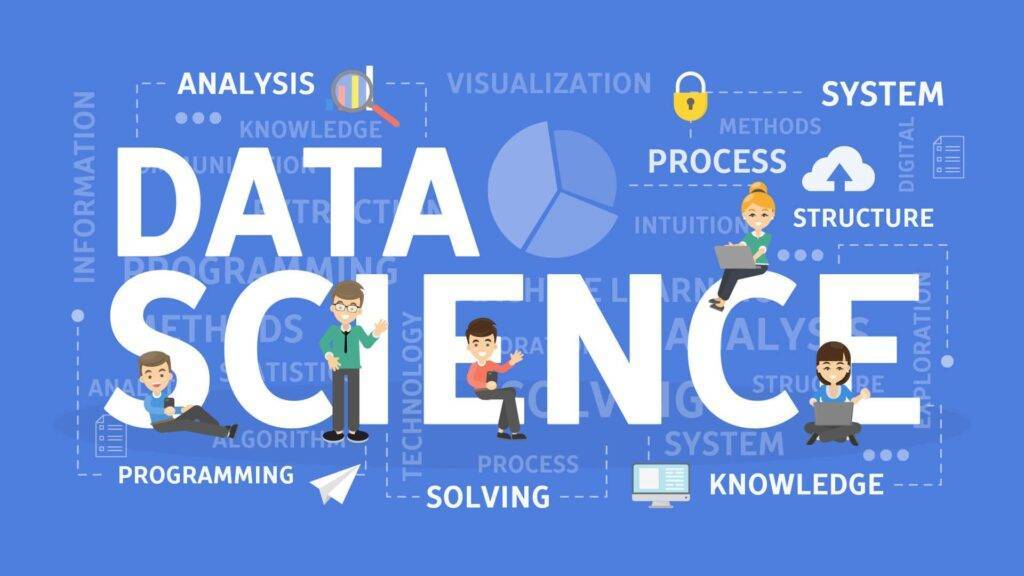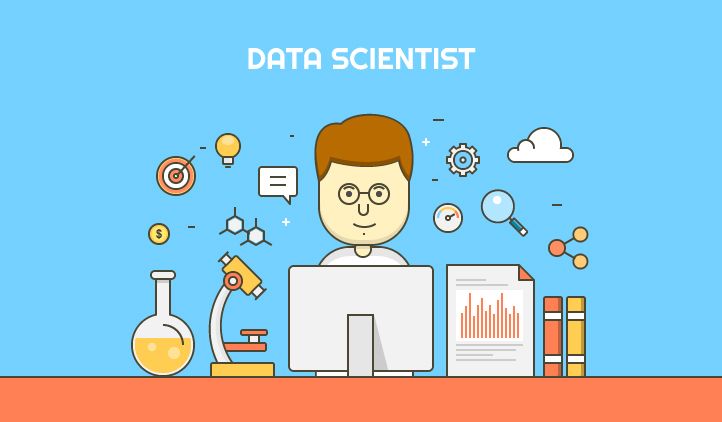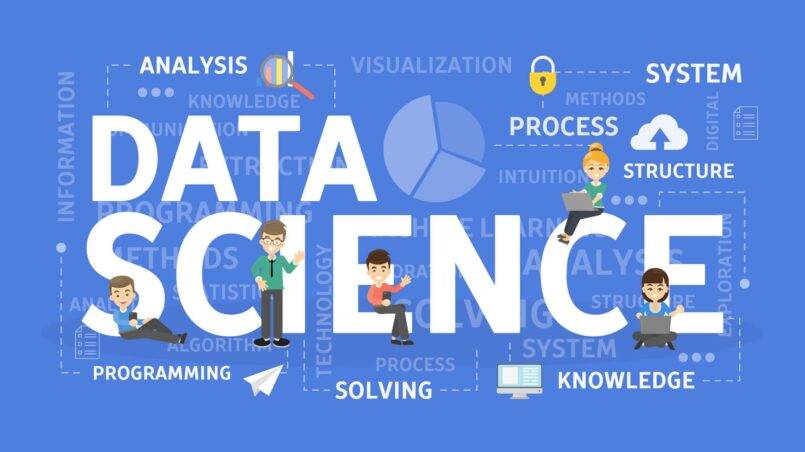
What is Data Science?
Data science is a field of study that aims to use a scientific approach to extract meaning and insights from data.
Need for Data Science:
- Data Science is a hot topic among skilled professionals and organizations that focus on collecting data and drawing meaningful insights out of it to aid business growth. A lot of Data is an asset to any organization, but only if processed efficiently. The need for storage grew multifold when we entered the age of big data.
- Data Science combines domain knowledge, programming abilities, and mathematics and statistics knowledge to extract useful insights from data. Machine learning algorithms are used to number, text, photos, video, audio, and other data to create artificial intelligence (AI) systems that can execute jobs that would normally need human intelligence. As a result, these systems produce insights that analysts and also business users may employ to create meaningful commercial value.
History of Data Science
- In 1962, John Tukey described a field he called “data analysis”, which resembles modern data science.
- In 1985, in a lecture given to the Chinese Academy of Sciences in Beijing, C. F. Jeff Wu used the term “data science” for the first time as an alternative name for statistics.
- Later, attendees at a 1992 statistics symposium at the University of Montpellier II acknowledged the emergence of a new discipline focused on data of various origins and forms, combining established concepts and principles of statistics and data analysis with computing.
- The term “data science” has been traced back to 1974, when Peter Naur proposed it as an alternative name for computer science. In 1996, the International Federation of Classification Societies became the first conference to specifically feature data science as a topic. However, the definition was still in flux.
- After the 1985 lecture in the Chinese Academy of Sciences in Beijing, in 1997 C. F. Jeff Wu again suggested that statistics should be renamed data science. He reasoned that a new name would help statistics shed inaccurate stereotypes, such as being synonymous with accounting, or limited to describing data. In 1998, Hayashi Chikio argued for data science as a new, interdisciplinary concept, with three aspects: data design, collection, and analysis.
- During the 1990s, popular terms for the process of finding patterns in datasets (which were increasingly large) included “knowledge discovery” and “data mining”
- The modern conception of data science as an independent discipline is sometimes attributed to William S. Cleveland.
- In a 2001 paper, he advocated an expansion of statistics beyond theory into technical areas; because this would significantly change the field, it warranted a new name. “Data science” became more widely used in the next few years: in 2002, the Committee on Data for Science and also Technology launched Data Science Journal.
- In 2003, Columbia University launched The Journal of Data Science.
- In 2014, the American Statistical Association’s Section on Statistical Learning and Data Mining changed its name to the Section on Statistical Learning and also Data Science, reflecting the ascendant popularity of data science.
Different Steps in Data Science
Step 1: Obtaining the Data
One first needs to identify what kind of Data needs to be analyzed. This Data could be around customer buying patterns or sales forecasts or even customer behavior across different touchpoints of a business. This Data needs to be exported to an excel or a CSV file. The next step would be to make this Data easily readable, i.e. it should be labeled and structured the right way so that it is easy to analyze.
Skills and tools required:
- Database management: SQL
- Understanding the database and what it represents
- Retrieving raw unstructured data in the form of text, docs, photos, videos, etc.
- Distributed storage: Hadoop, Spark, or Apache
Step 2: Scrubbing or cleaning the Data
This is an important step because before you are able to read the data, you must make sure it is in a perfectly readable state, without any mistakes, with no missing values or wrong values. The Data has to be consistent throughout, to ensure you can make an error-free analysis.
Skills and tools required:
- Scripting language– Python, R, SAS
- Data wrangling tools– Python, Pandas, R
- Distributed processing– Hadoop, Mapreduce/spark
Step 3: Exploratory Data Analytics
Now that your Data is clean and readable, it’s time to get to the real work – Analyzing the data. This is done by visualizing the data in various ways and identifying patterns to spot anything out of the ordinary. In order to be able to analyse the data, you must have high attention to detail to identify if anything is out of place. Additionally, you need to be able to think out of the box to identify trends and build out hypotheses. And then based on this analysis, come with solutions. This is the primary job of a Data Analyst.
Skills and tools required:
- Python libraries – Numpy, Matplotlib, Pandas, Scipy
- R libraries – GGplot2, Dplyr
- Inferential statistics
- Data visualization
- Experimental design
Step 4: Modeling or Machine Learning
Machine Learning is an application of Artificial Intelligence, in which, a machine can follow commands and rules (algorithms) and come up with predictive solutions without any human supervision.
The data engineer or scientist writes down a set of instructions for the Machine Learning algorithm to follow based on the Data that has to be analyzed. The algorithm uses these instructions in an iterative manner to come up with the right output.
After cleaning up the data and finding out essential features through the data exploration phase, using a statistical model as a predictive tool will help you develop relatively error-free business insights enabling you to improve your overall decision making.
Skills and tools required:
- Machine learning – supervised, unsupervised and reinforcement machine learning
- Evaluation methods
- Machine learning libraries – Python (sci-kit learn) / R (CARET)
- Linear algebra and multivariate calculus
Step 5: Interpreting or Data storytelling
This is the final step, in which you uncover your findings and present them to the organization. The most important skill in this would be your ability to explain your results. Hence the term “storytelling”
In order to understand how the data can affect the business or how your solution helps to provide better business solutions, you must also have a good understanding of your current organization’s business and business processes.
Skills and tools required:
- Knowledge of your business domain
- Data visualization tools – Tableau, GGplot, Seaborn etc.
- Communication – presentation skills, both verbal and written
Now that you know what skills and tools you need to know in order to become a data scientist, the next step for you is to learn all these tools and enter into the vast field yourself.
Advantages of Data Science
High Demand: Data science is in high demand in the current society. Almost every person is interested in this career data scientists are needed in the job market due to the large amounts on data being created every day it is predicted to create 11.5 million jobs by 2026. this makes data science a promising career in the future. With the high rate at which Data is generated a data scientist will be a very marketable person in the society, every company and cooperation will need one.
Improved healthcare: In the healthcare sector, great improvements have taken place since the emergence of data science. With the advent of machine learning, it has been made easier to detect early-stage tumours. Also, many other health-care industries are using Data Science to help their clients. With the fight against diseases such as cancer, Data is an essential necessity that will help in the discovery of a cure with data science lives will change.
Customized user experience: Data Science involves the use of machine learning which has enabled industries to create better products tailored specifically for customer experiences. For example, Recommendation Systems used by e-commerce websites provide personalized insights to users based on their historical purchases.
Disadvantages of Data Science
Concerns over data privacy: In many industries, Data is their fuel. A Data Scientist will help companies to make data-driven decisions. But in the previous decade data security and concerns over the customer’s privacy has been a hot topic. Data utilized in the process may breach the privacy of customers. The personal data of an individual is visible in the parent company and at times may leak due to security leaks. This poses a challenge in the data industries
Too much dependence on data: Data Scientist analyzes data and makes careful predictions in order to facilitate the decision-making process. When unproved Data is analyzed it does not yield the expected results. This can also fail due to weak management and poor utilization of resources.
Career in Data Science:

Is data science a good career?
- Data science is a very good career with tremendous opportunities for advancement in the future. Already, demand is high, salaries are competitive, and also the perks are numerous – which is why Data Scientist has been called “the most promising career” by LinkedIn and the “best job in America” by Glassdoor.
- Data science is the domain of study that deals with vast volumes of data using modern tools and techniques to find unseen patterns, derive meaningful information, and make business decisions. Data science uses complex machine learning algorithms to build predictive models.
- The data used for analysis can come from many different sources and also presented in various formats.
Data Science Jobs:
As mentioned above, there are a variety of different jobs and roles under the data science umbrella to choose from. Here are different job profiles that can eventually lead you to become a data scientist
- Data Analyst
- Data Engineers
- Database Administrator
- Machine Learning Engineer
- Data Architect
- Statistician
- Business Analyst
- Data and Analytics Manager
- Data Scientist
Data Scientist:
- A data scientist identifies important questions, collects relevant data from various sources, stores and organizes data, decipher useful information, and finally translates it into business solutions and communicate the findings to affect the business positively.
- Apart from building complex quantitative algorithms and synthesizing a large volume of information, the data scientists are also experienced in communication and leadership skills, which are necessary to drive measurable and tangible results to various business stakeholders.
Data Science Salary:
According to Payscale, a data scientist’s income in India varies depending on where they work:
| Mumbai | Rs.788,789 per annum |
| Chennai | Rs.794,403 per annum |
| Bangalore | Rs.984,488 per annum |
| Hyderabad | Rs.795,023 per annum |
| Pune | Rs.725,146 per annum |
| Kolkata | Rs. 402,978 per annum |
Bangalore, Chennai, and Hyderabad are three of the highest paying cities for data scientists in India.
Based on Employer
Without a doubt, prominent organizations are at the top of the list of the highest-paying data positions. They also have a reputation for raising salaries by 15% per year. Top firms pay data scientists in the following ways:
| IBM Corp | INR 1,468,040 per annum |
| Accenture | INR 1,986,586 per annum |
| JP Morgan Chase and Co | INR 997,500 per annum |
| American Express | INR 1,350,000 per annum |
| McKinsey and Company | INR 1,080,000 per annum |
| Wipro Technology | INR 1,750,000 per annum |
Based on Skills
To get a job paying this well, you’ll need to have more than a Master’s degree and be conversant with the languages and tools used to manage data. Here are some additional AIM tidbits:
- Knowing R is the most crucial and sought-after expertise, followed by Python. Python salary in India is expected to be around 10.2 lakhs INR per annum
- When a Data Analyst has knowledge of both Big Data and Data Science, their income rises by 26%, compared to when they only have knowledge of one.
- SAS users are paid in the range of INR 9.1-10.8 lakhs per annum, whereas SPSS professionals are compensated in the range of INR 7.3 lakhs per annum.
- Machine Learning salaries in India start at roughly 3.5 lakhs INR and can rise to 16 lakhs INR as you advance in the industry. Python is one of the most popular languages for machine learning, and Python developers in India earn some of the best salaries in the world.
- Artificial Intelligence knowledge can assist to advance your career in general. If you are a beginner in this field, the Artificial Intelligence pay in India is not less than 5-6 lakhs INR.
Future of Data Science:
- Over the last few years, data science has continued to evolve and permeate nearly every industry that generates or relies on data. In a 2010 article published in The Economist, Kenneth Cukier says data scientists “Combine the skills of software programmer, statistician, and storyteller/artist to extract the nuggets of gold hidden under mountains of data.”
- Today, data scientists are invaluable to any company in which they work, and employers are willing to pay top dollar to hire them. Also, data science degree programs have emerged to train the next generation of data scientists.
- By this time, companies had also begun to view data as a commodity upon which they could capitalize. Thomas H. Davenport, Don Cohen, and Al Jacobson wrote in a 2005 Babson College Working Knowledge Research Center report, “Instead of competing on traditional factors, companies are beginning to employ statistical and quantitative analysis and predictive modelling as primary elements of competition.”
- Still, in 2009, Google Chief Economist Hal Varian told the McKinsey Quarterly that he was concerned with the deficit of individuals qualified Data analyst. He said, “The complimentary scarce factor is the ability to understand that Data and extract value from it. I do think those skills, of being able to access, understand, and communicate the insights you get from the data analysis are going to be extremely important.”
Data Science Course:

There are plenty of Data science courses offered by many reputed institutes and Online Education platform.
IIT Madras which is ranked No 1 is offering Diploma in Data Science for college students, working professionals and job seekers who aim to build a career in these domains.
IIT Madras Bsc Data Science
It is also offering BSc in Programming and Data Science. You can work towards an undergraduate degree from an IIT regardless of your age or location, and also with a wide range of academic backgrounds.
LIKE WHAT YOU’RE READING?
CHECK OUT SOME OF OUR OTHER GREAT CONTENT HERE
- ARTIFICIAL INTELLIGENCE (AI) – A BEGINNER’S GUIDE
- WHAT IS MACHINE LEARNING?
- HOW TO START A CAREER IN ARTIFICIAL INTELLIGENCE?
- HOW AI IS USED IN DIGITAL MARKETING?
- TOP 5 BEST SEO TOOLS(2022)




Hello my friend! I want to say that this post is amazing, nice written and include approximately all vital infos. I would like to see more posts like this.